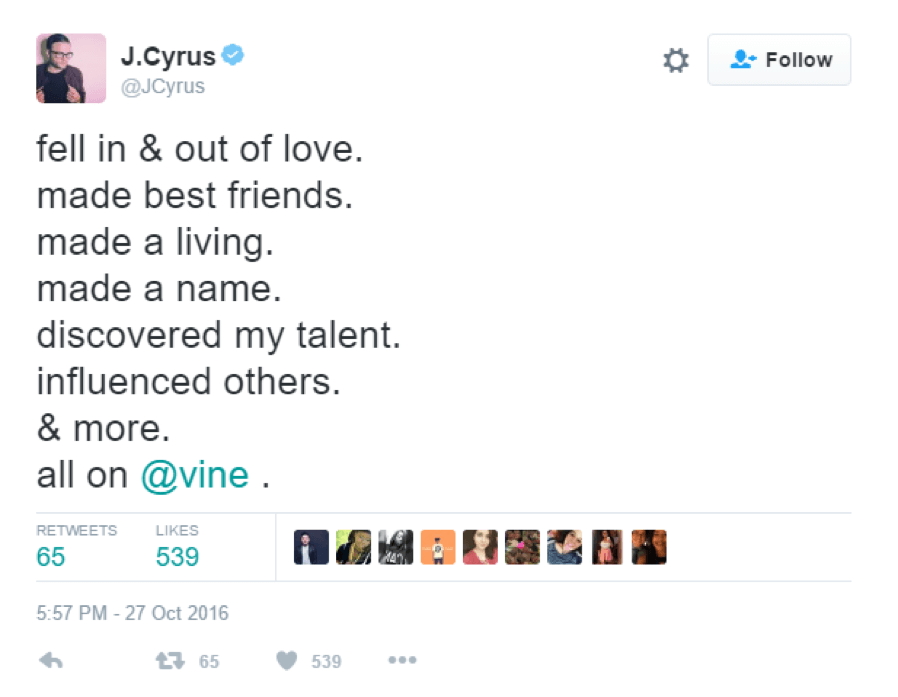
 Vines-closure-can-teach-us-influenc...
Vines-closure-can-teach-us-influenc... 
Twitter announced last week that it is killing off its video sharing app, Vine. The service, which launched in 2013, let users create six second lopping videos (and sometimes longer), which could then be shared on Twitter. In many ways, Vine was the app that helped kick-start the video revolution on social media, and so the news that it is shutting down completely has been met with some regret and resistance, particularly among online influencers who have built their career through Vine.
Vine has helped to launch a range of social talent over the past few years, such as singer-songwriter Shawn Mendes, make-up artist Jesse Smiles, serial entrepreneur Jérome Jarre and comedian Jerry Purpdrank, among countless others. US teen Nash Grier, one of the biggest Vine sensations who at 16, had 10 million followers, has built a film career and clothing line through his Vine following. The app proved particularly popular for break-out sports and comedy stars; so much so that there is even a group of Vine stars who all live on the same street in Los Angeles, appropriately titled “Vine Street”.
In many ways, Vine also helped to define some of the aesthetic quality of the videos that now flood social networks like Facebook. The reasons for Twitter abandoning it now are unclear, but most likely linked to its staff cutbacks and disappointing financial results. Vine was not a revenue-driver for Twitter, nor was it growing. No doubt the rapid rise of Snapchat was a further nail in the coffin, as was Instagram’s recent move into video. In a blog post, a company spokesperson said…
“Nothing is happening to the apps, website or your Vines today. We value you, your Vines, and are going to do this the right way. You’ll be able to access and download your Vines.
“We’ll be keeping the website online because we think it’s important to still be able to watch all the incredible Vines that have been made. You will be notified before we make any changes to the app or website.”
Vine was originally intended as a life-casting tool, but this never really took off, and it wasn’t until April, 2013, when it introduced a front-facing camera for selfies, that it turned out that people would rather broadcast themselves than their surroundings. For quite some time, it was a haven for creativity, hence the rise of the Vine ‘celebrity’, many of whom then branched out onto other social platforms such as YouTube and Snapchat.
The lesson in this for brands
The news of Vine’s closure is a much-needed wake-up call to brands taking a platform-specific approach to their influencer marketing. This is a big lesson in the importance of collaborating with influencers who have followings on multiple platforms.
Social talent with a primary following on Vine, and a reliance on it for their careers and livelihood, have been up in arms across Twitter particularly. For example, rapper J. Cyrus, with 1.5m followers on Vine, wrote:

Twitter’s future has seemed uncertain for quite some time, with CEO Jack Dorsey most recently revealing his plans to reposition it as a news-sharing site, taking it beyond a pure-play social network. “We have experienced a series of challenges. For a long time, Twitter saw hundreds of use cases and never really saw which was important to strengthen,” he said at Dmexco recently.
But nothing could have predicted the closure of Vine, and the announcement has taken influencers by surprise as much as brands. Now is the time for brands to be taking a strategic approach to their influencer marketing, if they’re not already, thinking more about the format and finding an influencer who’s a good fit, than the platform specifically. While Snapchat might be hot right now, there’s no guarantee it will still be this time next year. It’s important to be thinking long-term, and spreading efforts across a broad range of platforms; or at least as much as budget allows.
RIP Vine, we will miss it and its influencers…

